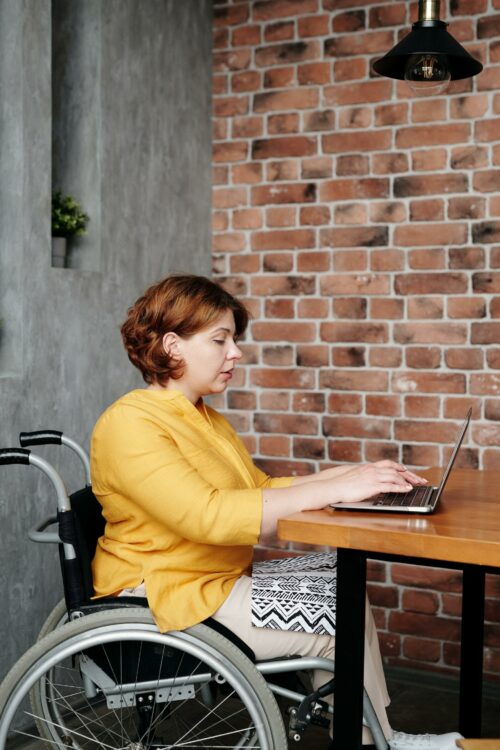What is Capital Gains Allowance and How Do You Claim It?
Sept 2022
This blog will discuss what capital allowances are and how you can claim them.
Through our discussion of capital allowances, we’ll discover the different types and the benefits of claiming them correctly. Our guide will give you an understanding of what an allowable capital allowance claim looks like, and where to start when it’s time for you to make a claim.
What is a capital gains allowance?
A capital allowance is a type of expenditure that a U.K. or Irish business can claim against its taxable profits. Capital allowances can be claimed on most asset purchases that are intended for use within the course of carrying out your business.
This can range from equipment needed in the business, through to research and development costs and even the expenses relating to building renovations.
The way that assets are classified will determine whether full or partial value can be claimed and whether the allowance is deductible in one year or spread across several years.
Businesses calculate the number of capital allowance expenses that they want to claim for during a financial period and then include that information on a tax return. The tax return is then submitted to HMRC. Depending on the type of business, the method of claiming is different and this will be discussed further below.
There are two main types of capital allowance, the first year allowance and annual investment allowance.

First year capital gains allowance
The first year allowance permits UK businesses to deduct the cost of capital expenditure during the year the expenditure occurred. The amount that can be claimed is between 6% and 100% depending on the type of asset that’s being claimed for.
The cost is then deducted from the profits before tax.
Eligible assets include:
Computer and internet technology.
Energy saving technologies.
Certain low emission cars.
Energy saving equipment.
Water conservation equipment.
Zero emission delivery vehicles.
Hydrogen/biofuel refuelling equipment.
The first year allowance only applies where a business that makes the purchase uses them within the business. They are not eligible if the intention is to lease the assets out.
Annual investment allowance
The annual investment allowance is a form of tax relief for UK businesses. The intention of the allowance is to allow businesses to deduct the total amount of qualifying capital expenditure from their taxable profits.
There is a limit to the annual investment allowance you can claim for, and this is based on the type of business that’s making the claim, the limits can be found here.
Eligible claims relate to the purchase of equipment for business use, such as tools and machinery. Other examples are listed below:
Office equipment, including computer hardware and office furniture
Building interior fixtures, such as air conditioning, kitchens and bathroom fittings
Lorries and/or vans
Machines used for the business
Agricultural machinery
This list is not exhaustive, to get a comprehensive assessment of eligibility you should talk to a professional advisor. Assets that can’t be claimed for include such things as buildings, cars and land.
The annual investment allowance is renewed each accounting period. The first year allowance and annual investment allowance can both be claimed for in the same tax period.
If you go over the annual investment allowance, or first year allowance, it is possible to claim a writing down allowance if the associated spending is deemed eligible.

What is a writing down allowance?
A writing down allowance is used when the cost of an asset purchase is deducted from the pre-tax profit in a given financial period. It’s a form of tax relief and the deduction is a percentage of the purchase cost.
The writing down allowance is used when the capital gains allowance limit for the taxable period has been reached, or if the asset purchased isn’t a qualifying asset for inclusion as a capital gains allowance.
Items to be included in a writing down allowance are grouped together into pools, based on the percentage write down rate they qualify for. The purpose of these pools is to claim the correct tax relief based on each pool and then carry the remaining balance forward each period, until the balance is paid off.
There are three different write down pools.
Main pool, 18%
Special pool rate, 6%
Single asset, 6%-18% and rate depends on the specific item
As an example:
A business makes a main pool asset purchase, costing £10,000
The purchase is eligible for an 18% write down allowance, £1,800 is claimed for in Year 1
The purchase is eligible for an 18% write down allowance on the remaining balance (£8,200) in Year 2
The purchase is eligible for an 18% write down allowance on the remaining balance (£6,724) in Year 3
And so on…
Are you clued in on your taxes?
What can you claim as a capital allowance?
You can claim capital gains allowances on items that are kept in a business for use within the business. These assets are known as ‘plant and machinery’.
What is plant and machinery? These items include such things as:
Items that you keep for use in your business, including cars
Costs of demolishing plant and machinery
- Parts of a building considered integral:
Lifts, escalators and moving walkways
Space and water heating systems
Air-conditioning and air cooling systems
Hot and cold water systems
Electrical systems
- Some fixtures:
Fitted kitchens
Bathroom suites
Fire alarms
CCTV systems
It’s also possible to make a claim for capital gains allowances on certain non plant items, including:
Research and development
Renovating properties (in disadvantaged areas of the UK)
Patents
So what doesn’t count as plant and machinery? These things include:
Assets that are leased out
Buildings, including doors, gates, shutters, mains water and gas systems
Land and related structures such as bridges and roads
Items used only for business entertainment

How do you claim capital allowances?
Once you have calculated your capital gains allowances, you make your claim through:
The amount of capital gains you can claim is then deducted from your profits.
If you want to claim the full asset value under the annual investment allowance, or first year allowance, then it must be claimed in the accounting period that the asset is purchased.
If you don’t intend to claim the tax relief on the full value of the asset, part of the value can be claimed under the writing down allowances.
Sometimes it can be difficult to establish the timing of the asset purchase, however it’s treated as:
The date you signed the contract, if payment for the asset is due within four months.
The date when payment is due, if it’s due more than four months later.
Common errors: Common errors that occur in capital allowance claims can include:
Not fully establishing the claim entitlement. This area of tax can be complex depending on the asset being claimed for, if you’re unsure, seek professional advice.
Having insufficient supporting documentation to justify the claim.
Over-claiming can occur by including ineligible assets or over estimating costs associated with them.
Under-claiming can occur by not including all eligible assets. This might be because you assume an asset won’t be accepted or not keeping hold of the supporting documentation you need to support the claim.
Implications of errors: By over-claiming HMRC may reject your claim, leaving you open to repayment of taxes due, with possible interest and penalties. In the event of under-claiming, your business is leaving cash on the table that could otherwise be diverted back into the business.

What are the benefits of claiming capital allowances?
There are many benefits to claiming capital allowances. These include:
1. Getting an immediate tax benefit, reducing and potentially offsetting another tax liability.
2. Improving cash flow and keeping cash within the business.
As with any tax issue, it’s always advisable to get professional advice to ensure that your claims are as efficient as possible.
Capital allowance FAQs
1. Is there an exhaustive list of what qualifies as plant and machinery?
No, there is no specific approved list. Plant and machinery are not defined in legislation so identifying qualifying assets is not always straightforward. When unsure it is always best to consult a professional advisor, this will help under claiming or over claiming, both of which can have material financial implications.
2. How can plant and machinery be identified?
Plant and machinery can be identified by relating to the facts relating to the purchase of the asset. Such as the nature of the transaction and the function of the asset in the transaction. There are a number of conditions/tests to help when the asset in question is not straightforward to identify.
3. Do all fixed asset additions qualify for a capital gains allowance?
A capital expenditure does not necessarily qualify as eligible under capital gains allowance schemes.
4. Can you claim for capital allowances that occurred in the past?
This is highly dependent upon the facts and circumstances, but it is possible to go back and amend your tax return to include the allowances. Professional advice should be sought to establish if this is permissible or not.
5. What happens if you don’t have any information relating to the asset purchase, can you still claim?
There has to be evidence to support all capital allowance claims. A professional accountancy service may be able to help construct supporting evidence if this has been lost.

In summary
Capital gains allowances are an important aspect of tax relief that vital businesses understand. Although not always straightforward, taking the time to correctly construct your company tax return to include capital allowances is important, otherwise you could be missing out on cash that could be used for other things within your business.
There are some key points raised in this blog that you should take away:
The U.K. government allows certain business expenditures to be deducted from tax as capital allowances.
The cost of some assets can (and should) be deducted from taxes in the accounting period in which the asset is bought.
The cost of other assets can be spread over multiple years using a writing down allowance pool.
Eligible capital allowance categories include research and development, equipment, plant and machinery and some vehicles used by the business.
The list of non eligible assets includes those used for entertainment, those that are leased out and office supplies.
As with all tax issues, it’s important to appoint the right advisor to ensure you get the very best guidance. Finding a knowledgeable and trusted accountancy partner for your business will help you stay up to date with all the latest industry regulations and laws, meaning you won't ever leave money unclaimed.

Hi, we’re Accountancy Cloud
If your company is looking to take advantage of capital gains allowances, we’re here to help. At Accountancy Cloud we offer a smart, live and personalised finance team to work alongside your business, ensuring your tax affairs are as efficient as possible.
Here at Accountancy Cloud, we provide startups and mature businesses with a combination of high-tech software and industry specialists in order to support and maximise your capital allowance claims. Allowing you to claim back costs and boost innovation.
We have many years of accounting experience within our dedicated team and this allows us to provide best-in-class support and advice for entrepreneurs, complementing your existing teams and helping you to drive growth.
Whilst we are able to carry out the accounting basics, we can also provide so much more. We work to ensure that you see the bigger picture for your business. We'll help you look at how to optimise revenue and margins, where to invest in headcount, and when to go into your next fundraising round.
Through our motivated and personalised service, we can help you achieve all of your business goals. Talk to us today to see how we can help you.
#1 Finance partner for tech & ecommerce startups
- 100% online
- Full finance stack for all your accounting needs
- 9/10 customers recommend us

Educational content just for startups. As a member, you’ll get unlimited access to an extensive range of guides, blogs and advice to help you run and grow your business.


